Many of us are familiar with chiropractors and what they do, but we often don’t know why precisely those pops and cracks help us feel better. Thankfully, we’re here to help. To better understand the benefits and goals of a chiropractic adjustment, check out these answers to some of the most asked questions.
What is a Chiropractic Adjustment?
Chiropractic adjustments involve manipulating the joints and should only be performed by a licensed chiropractor, as seeking the help of an unlicensed practitioner could severely damage your joints. Often referred to as spinal manipulations, these adjustments can alleviate pain and misalignment that may inhibit movement and eventually result in complete immobility if not corrected.
What’s the Objective of Spinal or Joint Manipulation?
The primary goals of this chiropractic practice are relief and prevention. Joint manipulation is accomplished by increasing mobility and alignment by minimizing pain. The process influences the physiology and neurophysiology of the joint, which requires specialized training that only a chiropractor has.
Joint Manipulation Sounds Painful: Are the Benefits Worth It?
A chiropractic adjustment can restore function to the musculoskeletal system rather than treat the symptoms of pain and lack of mobility. Treatment is considered safe and effective and has a lower probability of injury than many procedures performed by a primary care physician. Specifically, a spinal manipulation treatment can alleviate debilitating back pain, which costs taxpayers at least $50 billion each year in lost wages and productivity.
How Does Spinal Manipulation Work?
Joint or spinal manipulation can reduce stress, improve range of motion, and restore normal function to nerves and cells that control the body. It can also alleviate back pain, headaches, neck pain, and paresthesia—the tingling sensation you may feel in your extremities. It also deters recurrence because it eliminates the root cause of these issues.
Joint or spinal manipulation is effective because it delivers a precision-controlled force to specific points on the body that correlate with the individual’s needs. This is accomplished without inflicting injury, thus requiring the expertise of a licensed chiropractor.
Why are Joint and Spinal Manipulations and Adjustments Effective?
Chiropractic physicians are skilled detectives. They must detect spinal misalignment through its effects on areas surrounding the spine, including the discs, ligaments, muscles, nerves, and soft tissues. Healthcare professionals often refer to this as subluxations: misaligned joints resulting from vehicle accidents, falls, sports injuries, work-related injuries, or poor posture. The result is the same, but treatment protocols may vary slightly. Only a chiropractor has the training to locate and treat these subluxations properly.
A subluxated joint isn’t completely dislocated, so it’s not termed a dislocated joint. When a joint is subluxated, it often irritates the nerve and causes pain and a loss of function in either the immediate area or other areas of the body. Often, pain or a loss of function will appear in an area that seems completely unrelated to the actual source of the issue. Subluxations are often painful and debilitating because they adversely impact the cells and nervous system that traverse the entire body.
A chiropractic doctor treats subluxations by restoring normal joint alignment to the affected joint. This involves quickly pushing on the misaligned joint to regain its proper position, resulting in the signature crack that’s sometimes heard during a chiropractic adjustment. The treatment is often performed manually, but specially designed instruments can deliver higher velocity adjustments with minimum force.
What are the Four Main Objectives of a Chiropractic Adjustment?
Joint or spinal manipulation has four main objectives:
- Restore Bones to Their Proper Alignment
The primary objective of a joint or spinal manipulation goes beyond merely correcting spinal subluxations (although they’re the most common source of neck and lower back pain). Beyond simple realignment, a chiropractic adjustment aims to restore spinal bones to their proper alignment to ultimately regain entire movement and function. When spinal bones are misaligned due to trauma, improper lifting, repetitive motions, poor sleeping habits, or any other cause, it adversely impacts the entire musculoskeletal system and the patient’s overall health. Chemical imbalances and emotional stress can also lead to spinal subluxations.
- Reestablish Nervous System Functionality
When spinal bones are misaligned, they can irritate, pinch, rub, or cause swelling to the many nerves surrounding the spine. This adversely affects the function of the organs, systems, and tissues controlled by these nerves, resulting in more than just lower back and neck pain. When these issues aren’t treated, and joints and nerves are not restored to proper alignment and function, this can eventually lead to immobility of most or all of the body.
- Regain Muscle Function
When movement causes pain, the body moves less than it would otherwise. As a result, muscles may weaken or atrophy from a lack of use. A weakened or atrophied muscle can cause spasms, adhesions, and scarring, exacerbating the problem.
- Correct Abnormal Soft-Tissue Function (And Other Related Benefits)
A joint or spinal misalignment can affect the blood supply to soft tissues so that they don’t receive needed nutrients, and in turn, the lymphatic system isn’t able to properly maintain them. Restoring proper alignment to surrounding joints and bones alleviates subluxation and restores proper soft-tissue function. The human body is designed to operate best with a continuous supply of blood and a properly functioning lymphatic system, removing metabolic toxins from the tissues. If the circulatory system isn’t working the way it should, you won’t get the blood flow your body needs, and your lymphatic system won’t be able to remove toxins that have accumulated. The result? A lack of energy, a compromised immune system, and fluid retention, which can cause hypertension.
Additional Objective:
One other goal of chiropractic adjustments is to deter the formation of bone spurs and spinal degeneration, which often become evident in different organs and tissues that are deprived of standard nerve control.
Why Do I Hear a Crack During an Adjustment?
Although it may sound unnerving, this distinctive noise may indicate a lack of synovial fluid in the joint and signal your chiropractor to use gentler techniques during the session. A crack doesn’t suggest that the procedure is dangerous, nor does it signal that it is a success. Synovial fluid is the cushioning fluid contained in each joint so that the sound may result from the movement of liquids and gases within the joint. Your chiropractor is trained to recognize this, its precise location, and what it indicates, so there’s no cause for alarm.
How Frequently are Chiropractic Adjustments Needed?
Although many people make a chiropractic appointment only when something is wrong, ideally, regular chiropractic adjustments will facilitate the patient’s best overall health. Joint and spinal misalignment should be corrected regularly to avoid long-term harmful effects on the body, which can cause joints to become immobilized.
Why Chiropractic?
Chiropractic is good for the body for several reasons, such as:
- Chiropractic helps keep the body in good repair, reducing chronic pain: therefore, lowering the likelihood of pain reliever dependence.
- Chiropractic nurtures the homeostatic function of the body, which occurs when all systems function the way they should: promoting health and longevity.
- Chiropractic alleviates pain in the bones, cartilage, connective tissues, joints, and muscles.
- Chiropractic may be more effective than physical therapy for some types of injuries.
- Chiropractic adjustments may reduce some symptoms of scoliosis.
- Chiropractic sessions may provide more immediate relief than some types of physical therapies.
- Chiropractic may reduce the symptoms of osteoarthritis.
- Chiropractic may improve posture, particularly among those who sit for extended periods. This usually results in pain relief as well.
- Chiropractic helps some athletes notice improved performance due to improved joint mobility, freer soft tissue movement, and reduced pain.
- Chiropractic treatment often costs less than other types of therapy.
Does Chiropractic Offer Any Additional Benefits?
Chiropractic adjustments can help alleviate the pain and inconvenience of many chronic ailments, such as:
Asthma:
Since joint and spinal misalignment disrupts the nerve impulses to the lungs, realigning the spine and joints can restore proper function and improve breathing.
Indigestion/heartburn:
Similarly, indigestion can be alleviated for the same reasons. A chiropractic session can restore proper function to nerves in the thoracic spine, which can relieve indigestion.
Range of motion limitations:
The range of motion will increase when the joints, muscles, ligaments, and nerves are correctly aligned. Regular sessions will help maintain proper alignment.
Balance issues:
Although tai-chi and similar exercise programs can strengthen muscles, they require balance. Chiropractic sessions can improve balance because they promote proper body alignment and function.
Sleep disturbances:
When the body isn’t in pain or stressed, getting to sleep is easier, and you sleep better overall: which means the body is healthier. Restorative sleep is necessary because it’s during this time that most of the body’s tissue regeneration occurs.
Pregnancy:
While pregnancy itself isn’t a “chronic ailment” per se, many women report that regular chiropractic adjustments during pregnancy resulted in easier pregnancies/deliveries and healthier babies.
Is Chiropractic Right for Me?
If you’re still unsure whether regular chiropractic adjustments will help address your needs, schedule an appointment with a chiropractor to find out. They will assess your unique individual circumstances and make a recommendation accordingly. Try it once. If you decide it’s not for you, then you’ve lost nothing. However, if you like improving your physiology, enjoying an increased range of motion, and experiencing decreased pain, regular chiropractic adjustments may be the ideal solution for you. Time to get cracking!


